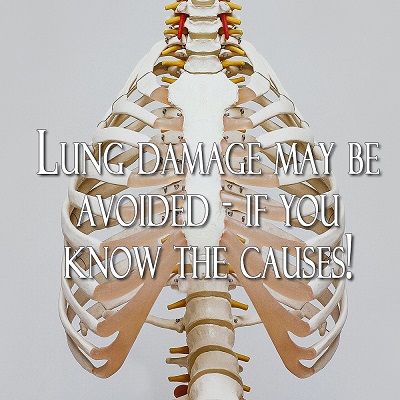 The state of your lungs is affected by a variety of factors, but the environment and your lifestyle play major roles in your respiratory health. To better understand the health of your lungs, there are warning signs that indicate you may have a problem with your lung health and/or possible damage.
The state of your lungs is affected by a variety of factors, but the environment and your lifestyle play major roles in your respiratory health. To better understand the health of your lungs, there are warning signs that indicate you may have a problem with your lung health and/or possible damage.
Warning Signs of Lung Damage
The following are considered warning signs of possible lung damage:
Chronic Cough
Cough that is persistent and has lasted for more than a month is considered chronic. The majority of lung diseases include chronic cough as one of its main symptoms.
Excessive Mucus Production
Mucus production occurring when an individual has the flu or a cold is considered normal, as mucus is the body’s natural defense against irritants, viruses, and bacteria. However, excessive and persistent mucus production can create a build-up in your lungs, making it difficult to breathe.
Dyspnea
More commonly referred to as shortness of breath, is another common warning sign of lung damage. Being out of breath while doing strenuous physical activities is understandable, but if it hinders you from doing almost any physical activity, then it could point to possible lung damage.
Wheezing
Breathing noisily can be an indication that there is something blocking the airways of the lungs. It could also indicate that the airways have become too narrow, making it difficult to breathe without creating a wheezing sound.
Chest Pain
Feeling tightness in the chest when breathing in and out could be a sign of damaged lungs, especially if it persists for more than a week.
Blood
Coughing up blood could be a sign that the lungs or the respiratory tracts are infected or damaged and should be looked into immediately.
Causes of Lung Damage
Environmental factors play a big role in a person’s lung health. While some of these factors can be avoided, others are part and parcel of an individual’s occupation. Unhealthy lifestyle habits can also put someone at a higher risk of damaging their lungs over time.
It is known that smoking is the foremost reason for lung damage. Unfortunately, smoking affects not only those who smoke, but exposure to second and third-hand smoke can also cause lung damage.
Apart from the obvious causes of lung damage, such as injuries caused by accident, some causes of lung damage are not so apparent. Take molds for example. Molds are potentially harmful to a person’s lungs, as molds release spores, or tiny particles, into the air. Spores can cause harm, especially if you have weak lungs.
Another possible cause of lung damage is radon. Radon is a type of gas that cannot be seen nor smelled. This type of gas can cause lung damage when the particles are inhaled.
Asbestos is another chemical that can be potentially harmful to anyone’s lungs. Asbestos was commonly used in insulations and fire-proofing materials, as well as in car brakes. It produces tiny fibers that are invisible to the eyes. When inhaled, asbestos can scar the lungs, causing a chronic lung disease called asbestosis. It can also trigger the onset of lung cancer.
Air pollution is another factor that can damage the lungs. Smog from car exhausts, dust from carpets, even pet dander, or the tiny particles of hair and skin that animals naturally shed, all contribute to air pollution and may cause lung damage in the longer term.
Who Are at Risk?
Smokers are at the highest risk of contracting lung damage. People who have a history of alcohol abuse are also at a higher risk. Having pre-existing lung conditions such as asthma and chronic obstruction pulmonary disease are also known to contribute to lung damage. Obesity can also increase a person’s risk of developing lung damage.
Lung damage is a fairly avoidable medical condition if you know what can cause it. Having a healthy lifestyle and avoiding environmental factors such as air pollution can decrease the risk of suffering from lung damage in the future.






